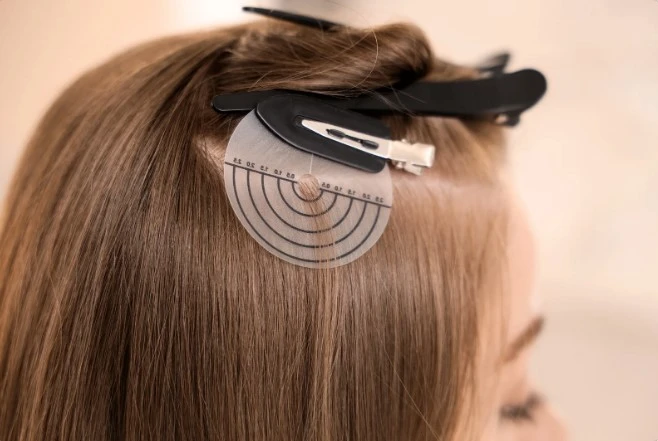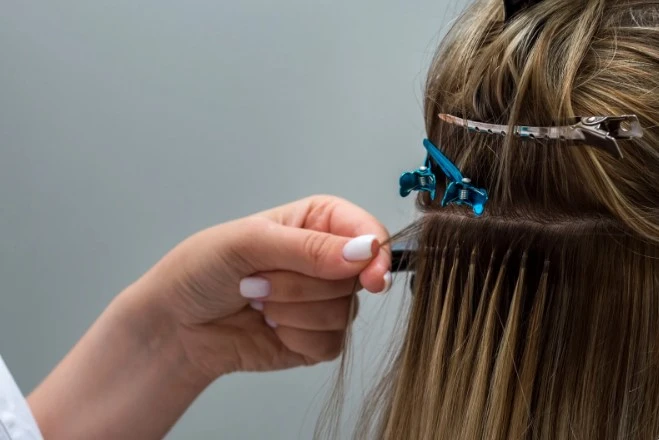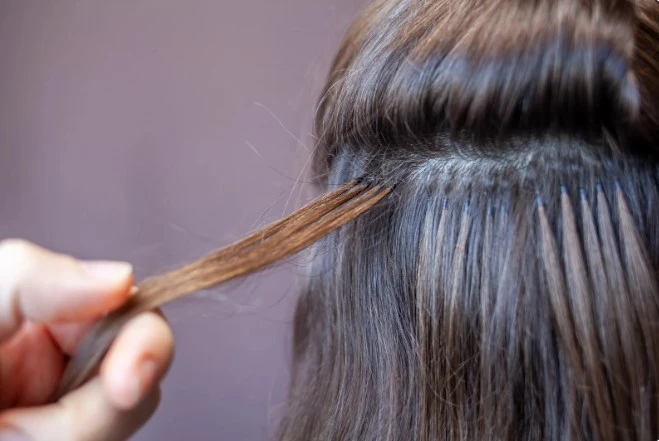In the heart of London, hair extensions have become more than a simple beauty accessory—they’re a statement and a creative solution for those seeking length, volume, or a whole new style. The demand grows as advanced techniques promise natural results, but concerns about hair health persist. Between salon consultations and online forums, conflicting advice is everywhere. Understanding the facts is essential for anyone considering this transformative option. For those exploring reputable providers such as Ivana Farisei hair extensions uk Ivana Farisei stand out for their range and expertise, but it’s crucial to separate myth from reality before making any decision.
Common Myths About Hair Extensions and Their Impact on Hair Health

Misinformation abounds when it comes to hair extensions and their effects on your scalp and natural hair. One persistent myth claims that all hair extensions inevitably cause severe hair damage. In reality, the outcome depends on the application method, quality of materials, and aftercare.
Many believe that extensions suffocate the scalp, stifle hair growth, or even cause irreversible hair loss. These are outdated fears rooted in anecdotal evidence and early extension technologies. Modern extensions, when professionally applied, do not inhibit natural growth cycles. In fact, temporary methods such as clip-ins or tape-ins cause minimal disruption to the hair shaft, while even semi-permanent options have been engineered to distribute weight evenly and minimize tension.
Another common misconception is that hair extensions are uncomfortable or even painful. While improper application or excessive weight can cause discomfort, advancements in techniques mean that a reputable technician will match the right type and amount of hair to your natural strands. When correctly installed, extensions feel like a natural part of you—allowing for normal activities, sports, and even sleep.
Maintenance also sparks confusion. Some individuals fear that extensions require high-maintenance routines that could stress both the hair and lifestyle. However, many modern systems are designed for ease, demanding only slightly more attention than untreated hair. Clarifying the difference between myth and fact empowers clients to make informed choices and encourages realistic expectations for both the appearance and health of their hair.
Evaluating Hair Extension Methods: Safety and Suitability for Different Hair Types
Choosing the appropriate extension technique is critical for both aesthetic satisfaction and hair health. There’s no single approach that fits all needs, and understanding the nuances helps prevent damage.
Hot Fusion, Cold Fusion, and Tape-Ins Explained
Hot fusion involves bonding extensions to the natural hair using a keratin adhesive and heat. While it yields a seamless finish and long-lasting result, it’s best suited for individuals with strong, resilient hair—those with fragile or fine hair may be at risk for breakage if the attachments are too heavy or maintenance is neglected.
Cold fusion techniques, such as micro rings or micro loops, avoid heat altogether. Extensions are attached using small beads or rings that clamp onto the natural strand, making them less likely to cause heat-related stress. This option is favored for those with sensitive or processed hair, but the weight and size of the bonds must still be carefully matched.
Tape-in extensions offer a quick, gentle method ideal for fine hair or those seeking a temporary boost. These lightweight wefts adhere to natural hair with a medical-grade adhesive and can be reused, reducing the need for repeated chemical or mechanical stress.
When searching for the right fit, clients in London often consult specialists. For example, Ivana Farisei offers a broad selection, including hair extensions for short hair Ivana Farisei providing expert advice for those with cropped or fragile styles. Carefully considering texture, density, and lifestyle helps prevent common pitfalls and ensures satisfaction.

Extension Aftercare: Key to Preventing Damage
Even the most advanced hair extensions require proper aftercare. Clients must follow a regular maintenance schedule: washing, conditioning, and gentle detangling. Brushing with the correct tool from root to tip avoids tangles and preserves both the natural and extension hair.
Salons recommend silk pillowcases and loose braids at night to reduce friction. Avoiding heavy oil products near bonds or adhesives prolongs the wear and prevents slippage. Professional removal is non-negotiable—DIY attempts can cause unnecessary hair loss or trauma. Routine salon visits for maintenance and repositioning keep the scalp and extensions healthy, supporting optimal longevity and a seamless look.
Professional Techniques and Safe Practices: What to Expect from a Trusted Salon
Advanced salons in the London region understand the complexities of hair health and the risks associated with improper application. Reputable stylists undergo specialist training, ensuring techniques are safe for all hair types. The consultation process is thorough, involving an assessment of scalp health, density, hair texture, and lifestyle, to recommend only those methods that will not jeopardize integrity.
Sophisticated systems such as the micro bond method are gaining popularity. Designed for maximum comfort and minimal strain, micro bonds use tiny keratin-based bonds applied with precision—resulting in lightweight extensions ideal for those with fine or delicate hair. In a comprehensive offering, Ivana Farisei provides micro bond hair extensions ivanafarisei.co.uk for subtle, natural results with an emphasis on client safety.
Key markers of a reputable salon include:
- Personalised consultations and patch tests before application.
- Tailored recommendations based on client hair type and goals.
- Use of ethically sourced, high-quality hair.
- Transparent communication regarding maintenance and aftercare.
- Professional removal and regular follow-up appointments.
These practices ensure both the immediate appearance and the long-term health of natural hair. By setting realistic expectations and emphasizing care, trusted London specialists position clients for lasting satisfaction.

Myths and Facts About Extensions: A Quick Reference Guide
Myths and misinformation can deter those who would benefit from hair extensions or lead to poor decisions. Here is a concise guide to separate fact from fiction:
- Myth: Hair extensions always cause thinning or hair loss.
Fact: With skilled application and proper care, extensions do not damage natural hair. - Myth: Extensions cannot be worn with short or fine hair.
Fact: Modern application methods, such as micro bonds and tape-ins, safely enhance short and fine styles. - Myth: Only synthetic hair is used in extensions.
Fact: Premium salons use 100% human hair, which blends seamlessly and styles naturally. - Myth: Extensions are painful or uncomfortable.
Fact: Properly fitted, high-quality extensions are comfortable and feel like a natural part of your hair. - Myth: Aftercare is complicated and time-consuming.
Fact: Maintenance requires only a small adjustment to regular routines, with support from salon professionals.
Demystifying these points gives confidence to those exploring hair enhancements.
Making Informed Choices for Hair Health and Style
The best hair extension experience in London begins with education and a realistic understanding of what modern systems can offer. By choosing a reputable specialist, prioritizing aftercare, and understanding the differences between application techniques, individuals can achieve their desired look without compromising hair health. Dispelling myths and relying on evidence-based guidance ensures that hair extensions remain a safe and vibrant tool for self-expression.

